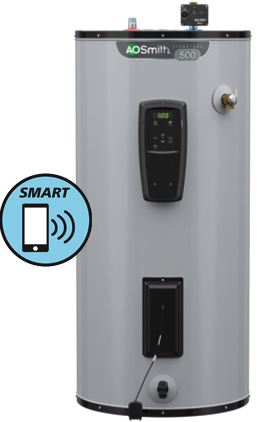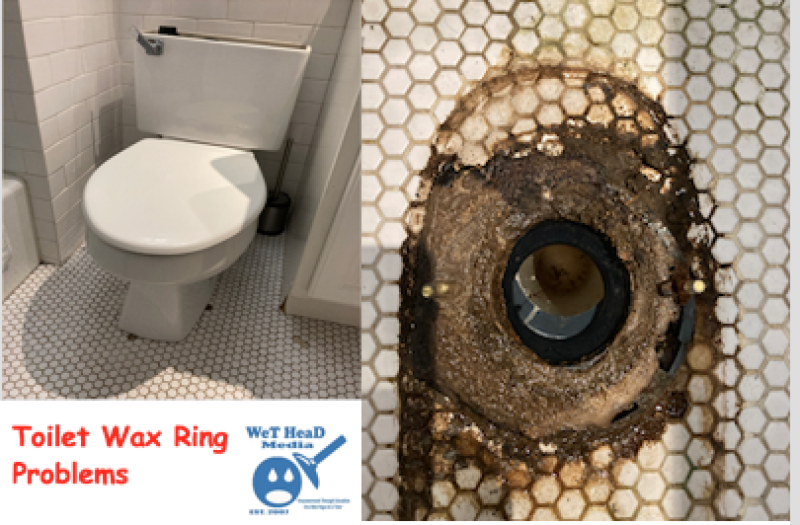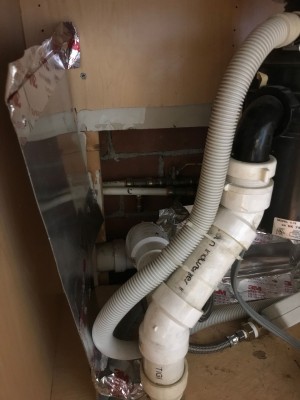How I (Johnny) Adjust High Water Pressure
 High water pressure in a home can do many bad things. The plumbing system of a home is designed to operate with a maximum pressure of 80-psi. Unfortunately municipal water suppliers cannot always supply the water to you at this pressure due to the design requirements of their system. The water supply has to have enough pressure to push the water uphill to the highest point of their system whether it is a house on a hill or, a tall building, and to be able to push water to refill water towers. Frequently at night, pressures are boosted to enable the water company to refill the water towers and meet the water demands of the next day. High water pressure can cause problems such as T&P valves on water heaters to discharge, faucets and other valves to leak and fail, excessive flow rates to showers causing you to run out of hot water, toilet tanks that refill so fast that the flapper just floats and water runs constantly through the toilet when you flush just to name a few. In the worst case scenario hoses or supply lines to clothes washers, sinks, toilets or icemakers can burst and cause water damage to your home.
High water pressure in a home can do many bad things. The plumbing system of a home is designed to operate with a maximum pressure of 80-psi. Unfortunately municipal water suppliers cannot always supply the water to you at this pressure due to the design requirements of their system. The water supply has to have enough pressure to push the water uphill to the highest point of their system whether it is a house on a hill or, a tall building, and to be able to push water to refill water towers. Frequently at night, pressures are boosted to enable the water company to refill the water towers and meet the water demands of the next day. High water pressure can cause problems such as T&P valves on water heaters to discharge, faucets and other valves to leak and fail, excessive flow rates to showers causing you to run out of hot water, toilet tanks that refill so fast that the flapper just floats and water runs constantly through the toilet when you flush just to name a few. In the worst case scenario hoses or supply lines to clothes washers, sinks, toilets or icemakers can burst and cause water damage to your home.
Pressure Reducing Valves or, Pressure Regulating Valves
The solution is a simple one and all that is required is to install a Pressure Reducing Valve or, Pressure Regulating Valve on the water supply to your home. Sometimes people partially close a valve or, throttle a valve thinking they are fixing the problem but in reality the pressure is still high it just drops when water is flowing. This throttling can mask the problem by lowering the flow like in the case of a toilet where the tank level can’t drop enough to allow the flapper to close, the lower flow will restore the function. However, as soon as the flow stops the pressure, which was dropping due to the restriction shoots right up to the high level stressing components of the water supply system.
A Pressure Reducing Valve or, Pressure Regulating Valve receives the high pressure on the inlet side and regulates the pressure on the outlet side to less than 80-psi without restricting the flow of water. This provides water at the pressure the components of your plumbing system are designed to operate at increasing the service life of them to normal length instead of a reduced service life. The Pressure Reducing Valve or, Pressure Regulating Valve should be installed where the water enters your home or, in some cases outside in a meter box if the meters are located outside. The Pressure Reducing Valve or, Pressure Regulating Valve should be installed before any point where water is used in the system. I typically use Pressure Reducing Valve or, Pressure Regulating Valve such as the Watts # 25AUB-Z3 which is very popular in this application and works well in most situations. Sometimes different valves are required to meet special application needs and you will need to know the Pressure Reducing Valve or, Pressure Regulating Valve you select meets your needs.
Thermal Expansion & Thermal Expansion Tanks
When a Pressure Reducing Valve or, Pressure Regulating Valve is installed in many cases it creates a closed system in your home, which can cause pressure increases on the house side of your water supply system to occur from Thermal Expansion of water being heated in a tank type water heater. Some Pressure Reducing Valves or, Pressure Regulating Valves have a bypass, which is a one-way valve that allows excess pressure to flow back to the unregulated side, this may allow the pressure build up from Thermal Expansion to bleed off, matching the unregulated supply pressure. This may be acceptable in cases where the pressure from your water supplier is only slightly higher than 80-psi but my preference is to install a Thermal Expansion Tank on the water heater, to absorb any pressure increase caused by Thermal Expansion, the pressure increase will be absorbed without any substantial increase in pressure on the regulated side. If your supplied water pressure is very high for instance in the 150-psi range, Thermal Expansion may cause the pressure on the regulated side to increase to 150-psi which could cause the T&P valve on your water heater to discharge. I consider it better to be safe than sorry and install a Thermal Expansion Tank on any Pressure Reducing Valve or, Pressure Regulating Valve installation. The Thermal Expansion Tank will absorb any pressure cycling from low to high and contribute to a longer service life expectancy of the water heater.
The Thermal Expansion Tank should be installed on the inlet side of the water heater without any valves between the water heater and the Thermal Expansion Tank. The Thermal Expansion Tank does not have to be physically located at that point but can instead be connected there and remotely mounted. Thermal Expansion Tanks are a tank that has a rubber bladder and there is an air charge on one side of the bladder and water can come in on the other side of the bladder. Water does not compress, yet air can be compressed so when Thermal Expansion causes the water to expand it flows into the Thermal Expansion Tank keeping the pressure constant or, very close to the set point of the Pressure Reducing Valve or, Pressure Regulating Valve. The air charge in the Thermal Expansion Tank should match the set point of the Pressure Reducing Valve or, Pressure Regulating Valve.
I hope this helps you to understand the importance of keeping the pressure on your homes water system below 80-psi and how you can accomplish that. If you have any questions or, comments please leave them below and we will reply.




First off I want to say awesome blog! I had a quick question that I’d like to ask if you don’t mind.
I was interested to find out how you center yourself and clear your head
prior to writing. I’ve had a difficult time clearing my thoughts in getting
my thoughts out there. I do enjoy writing however it just seems like the first 10 to 15 minutes are
lost simply just trying to figure out how to begin. Any ideas or hints?
Kudos!